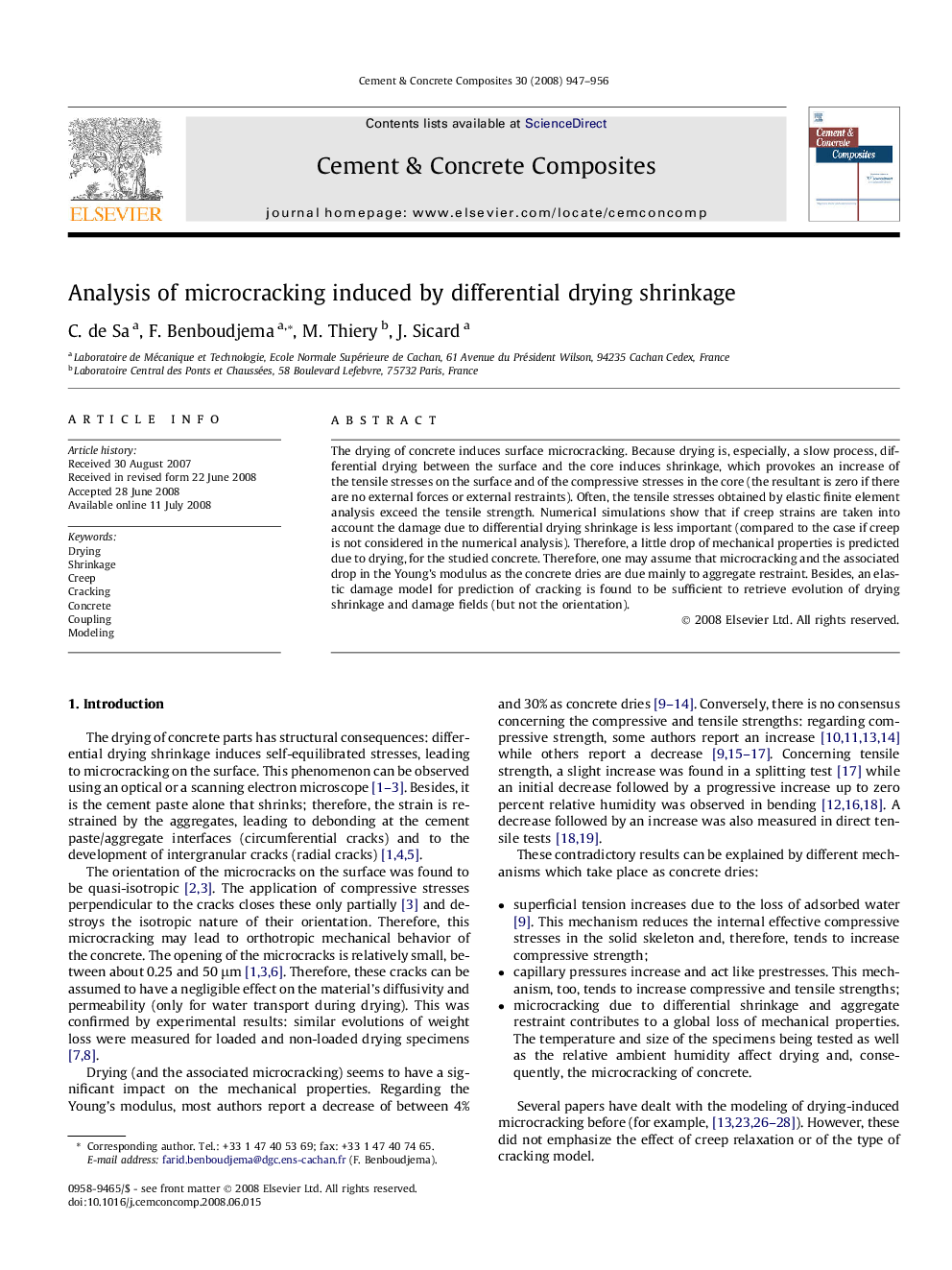| Article ID | Journal | Published Year | Pages | File Type |
|---|---|---|---|---|
| 1455463 | Cement and Concrete Composites | 2008 | 10 Pages |
The drying of concrete induces surface microcracking. Because drying is, especially, a slow process, differential drying between the surface and the core induces shrinkage, which provokes an increase of the tensile stresses on the surface and of the compressive stresses in the core (the resultant is zero if there are no external forces or external restraints). Often, the tensile stresses obtained by elastic finite element analysis exceed the tensile strength. Numerical simulations show that if creep strains are taken into account the damage due to differential drying shrinkage is less important (compared to the case if creep is not considered in the numerical analysis). Therefore, a little drop of mechanical properties is predicted due to drying, for the studied concrete. Therefore, one may assume that microcracking and the associated drop in the Young’s modulus as the concrete dries are due mainly to aggregate restraint. Besides, an elastic damage model for prediction of cracking is found to be sufficient to retrieve evolution of drying shrinkage and damage fields (but not the orientation).
